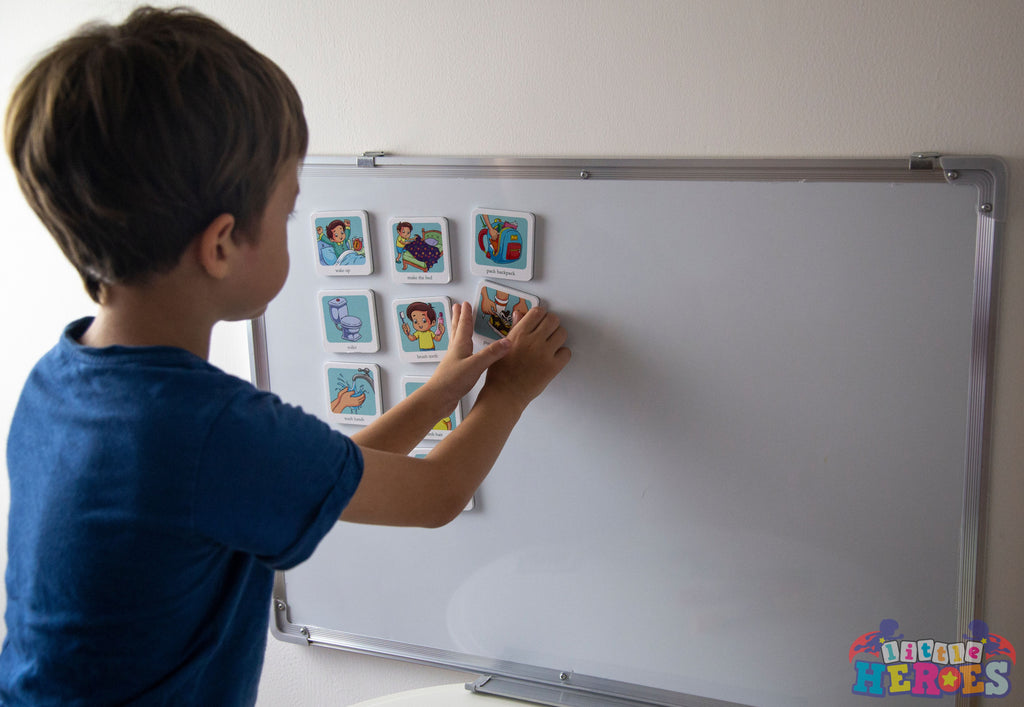Why should we introduce a visual based communication system during early childhood, and why is it all the more critical when working with special needs? Well, because the world around us is getting increasingly complex, and the amount of information and stimulation that children have to cope with are putting immense pressure on them to learn more, younger and faster!

Visual communication is key to conveying complicated information. Imagine yourself as a grownup at your work place. When preparing a presentation that requires a certain amount of explanation (e.g. new business workflow) you are most likely to use a lot of graphs, charts, and graphics. The modern world for our children with special needs is even more complex than your work place might seem to you. Visuals help them grasp and process information with greater ease, especially because children with autism and special needs are very strong visual learners. Let's use their strengths to help them grow!
Visual strategies for improving communication
- Visually — pictures and illustrations.
- Aurally — you verbalising in simple words what’s shown on the picture.
- Linguistically — simple 1-2-3 word descriptions under each image.
- Logically —every action, change and what follows next are played out in a logical order.
- Kinaesthetically — if the action needs to be taught from scratch, you personally model it for them.

How VLAs work
- By helping your child learn more effectively — children who are visual learners can process and retain information much faster and with more reliability. This will allow them to understand faster and reduce their anxiety.
-
By allowing your child to learn in a new way — When trying to convey complex information, a visual will often help children grasp a concept much quicker than with words and text. Presenting information, an action, or what’s coming next in pictures will give your child confidence to do it independently with time:
oh, I know what to do now…”, “this looks familiar”.
- By increasing your child’s retention of important information — these children are far more likely to remember visuals rather than words. By showing images, you will help increase their understanding and memory of important details as well as develop the right habits from an early age.


